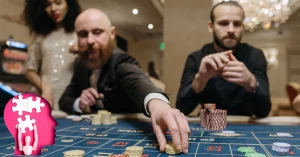Gambling in Pop Culture: Movies and TV Shows That Get It Right
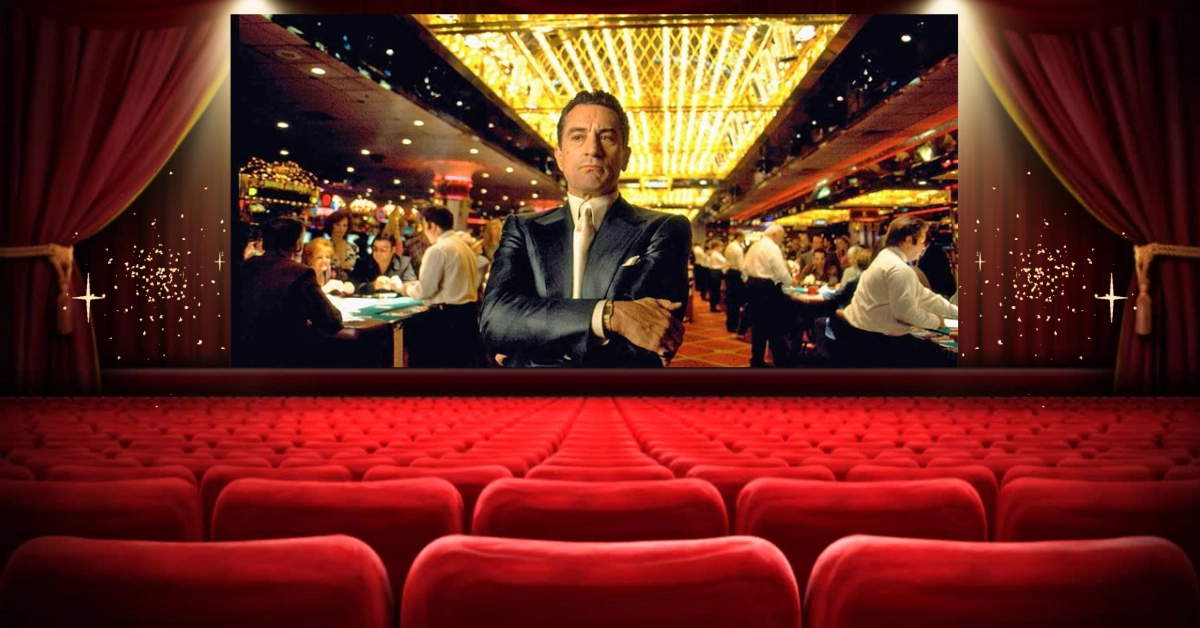
“In Vegas, everybody’s gotta watch everybody else. Since the players are looking to beat the casino, the dealers are watching the players. The box men are watching the dealers. The floor men are watching the box men. The pit bosses are watching the floor men. The shift bosses are watching the pit bosses. The casino manager is watching the shift bosses. I’m watching the casino manager. And the eye-in-the-sky is watching us all.”
Truer words were never spoken about the floor than Ace Rothstein’s voiceover in the 1995 movie Casino. Robert De Niro portrays Rothstein as a shrewd and disciplined casino manager. His expertise in gambling and rigorous management style turned the Tangiers Casino into a force to be reckoned with. His influence on Las Vegas is profound—he brings efficiency and sky-high profits to the joint (along with a few mob beatings and murders). But it is fascinating to watch, and the movie and TV studios know how to hook us when it comes to audiences wanting to watch casino and gambling tales play out on the big and small screens.
But are these stories accurate? Or even close? This is an important distinction—accurate depictions of gambling in movies and TV shows are actually necessary. Why? Because showing a real portrayal of the gambling world makes the storytelling even more immersive for viewers. It also educates viewers about the rules, strategies, and general atmosphere of gambling so they have a better understanding of its nuances. By showing both the excitement and very real potential risks, like financial loss and addiction, these depictions promote responsible gambling behavior and give viewers a more informed perspective.
The Fascination with Gambling in Pop Culture
Gambling has been a staple in films and TV since the early days of cinema. Classic films like The Cincinnati Kid (1965) and The Sting (1973) introduced audiences to the high-stakes world of poker and con games, capturing the appeal and high tension of gambling. Television shows followed suit, with series like “Maverick” (1957-1962) bringing card games and casino antics into living rooms across America.
The Evolution of Gambling Portrayals: From Early Cinema to Modern Streaming Platforms
Over the decades, the portrayal of gambling has changed with the times—early depictions often romanticized the gambler as a debonair, risk-taking hero (think Paul Newman as “Fast Eddie” Felson in The Hustler). As cinema progressed, films like Casino (1995) and Rounders (1998) offered a slightly more nuanced view, exploring the complications and the darker sides that can be part and parcel of the gambling world. Cut to the present, and streaming platforms continue this trend with the super dark series Ozark, which shows viewers the multi-layered narratives that dig into the ethical and psychological dimensions of gambling.
Why Gambling Captivates Audiences
Gambling naturally lends itself to storytelling because of the inherent thrill and suspense that comes with it—the unpredictability of games of chance keeps viewers on the edge of their seats, wondering whether the next move will lead to a big win or a devastating loss. If you watched Uncut Gems (2019) with Adam Sandler, you probably held your breath and felt like you were on the verge of having a panic attack for the last 30 minutes of the film. This kind of tension drives plotlines and creates unforgettable moments that audiences talk about way after the credits have rolled.
Relatable Characters and High Stakes: Connecting with Viewers
Gambling stories usually feature characters facing high stakes, both financially and emotionally—and they are everyday Joe Schmoes like you and me. These narratives speak to us because they mirror real-life struggles and dreams. Whether it’s a poker player risking it all for one final hand or a casino manager trying to stay sane amid the pressures of the gambling industry, these characters embody the hopes and fears that almost every viewer faces at one time or another. , keeping them rooted to their seats and making them root for the characters—even if they aren’t heroes—and feel invested in what happens to them.
Iconic Movies That Depict Gambling Accurately
So many films attempt to capture the excitement, tension, and drama of high-stakes gambling, and while most take creative liberties, a few stand out for their accurate depictions of the gambling world. These films not only entertain but also provide a hyper-realistic look into the complexities and nuances of gambling. We’re going to go over the ones we think get it right, starting with an iconic classic.
Casino (1995)
Casino, directed by the Martin Scorsese, tells the story of Sam “Ace” Rothstein (Robert De Niro), a meticulous and highly skilled casino manager tasked with running the Tangiers Casino in Las Vegas. His partner, Nicky Santoro (Joe Pesci), is a volatile (psychotic) enforcer who is sent by the mob to oversee things and to protect their interests. The film also stars Sharon Stone as Ginger McKenna, Ace’s glamorous but troubled wife who runs over DeNiro and gets a floor-length chinchilla coat that still makes me drool when I think about it. The plot revolves around the rise and fall of the casino empire, showcasing the intricacies of casino operations, the influence of organized crime, and the personal lives of everyone involved.
Accuracy Meter: 9/10
This film has been lauded for its realistic portrayal of how casinos operated in the 1970s and 1980s, particularly when it comes to the involvement of the mob. The film shows the day-to-day operations of the casino, from managing dealers and players to handling the massive sums of money that flow through the establishment. Scorsese’s attention to detail is evident in the depiction of security measures, the comp system for high rollers, and the behind-the-scenes workings of casino management. The movie also accurately portrays the extent of mob influence in Las Vegas during that era, highlighting the corruption, violence, and control exerted by organized crime.
Impact: How Casino Influenced Public Perception of Las Vegas
We’d hazard to say that Casino had a pretty profound impact on the public’s perception of Las Vegas—it showed the gritty and brutal reality behind the glitz and glamour, and the film shed light on the darker side of the city’s history. It exposed audiences to the complexities of running a casino and the pervasive influence of the mob, which was largely hidden from public view (although it was an open secret back then). This more nuanced portrayal demystified Las Vegas, showing it as a place of both opportunity and very real danger. The film’s influence also extended beyond entertainment purposes by contributing to a more informed and critical understanding of the gambling industry and its historical context.
Rounders (1998)
Rounders, directed by John Dahl, follows the story of Mike McDermott (Matt Damon), a whiz kid poker player who dreams of making it big in the world of high-stakes poker. After losing his entire bankroll to Russian mobster Teddy KGB (John Malkovich with a ridiculously over-the-top accent), Mike swears off poker to keep his head in the books and focus on law school. But when his friend Lester “Worm” Murphy (Edward Norton) is released from the clink and drags him back into the world of underground poker to pay off old debts, Mike finds himself torn between his promise and the lure of the poker table. The film explores Mike’s struggle to balance his love for poker with the responsibilities of his personal life.
Accuracy Meter: 8/10
Although not based on a true story, Rounders is nonetheless praised for its authentic depiction of the underground poker scene and the psychology of poker players. The film accurately portrays the nuances of the game, including strategies, tells, and the intense mental battles between players. The underground poker rooms, with their smoky, dimly lit atmosphere, show the reality of illegal table games. The characters’ motivations, fears, and ambitions are realistically portrayed, giving viewers a good insight into the mindset of a professional poker player. The dialogue, which is filled with poker jargon and strategy discussions, adds to the film’s authenticity.
Impact: Influence on the Popularity of Poker in the Late 1990s and Early 2000s
This movie had a notable impact on the popularity of poker (and me, as it was my ex’s fav movie so I had to watch it A LOT), particularly in the late 1990s and early 2000s. The film inspired a new generation of poker fans and contributed to the poker boom, which saw a surge in the game’s popularity worldwide. On top of that, a lot of professional poker players have credited Rounders with sparking their interest in the game. The film’s genuine portrayal of the highs and lows of poker life, combined with its compelling storyline, resonated with audiences and helped to explain the game, making it more accessible and appealing to a much bigger audience.
21 (2008)
Directed by Robert Luketic, 21 is a heist drama inspired by the true story of the MIT Blackjack Team. The film centers on Ben Campbell (Jim Sturgess), a gifted MIT student who needs money for Harvard Medical School. His mathematical prowess catches the attention of his unorthodox professor, Micky Rosa (Kevin Spacey), who recruits him into a team of students who are trained in card counting. The team, which includes Jill Taylor (Kate Bosworth), Choi (Aaron Yoo), Kianna (Liza Lapira), and Fisher (Jacob Pitts), exploits blackjack games in Las Vegas casinos. Their success attracts the attention of Cole Williams (Laurence Fishburne), a casino security specialist, leading to a tense confrontation as the stakes get higher and higher.
Accuracy Meter: 10/10 (True Story)
21 is based on Ben Mezrich’s book “Bringing Down the House,” which chronicles the real-life MIT Blackjack Team’s exploits. The film stays true to most aspects of the story, including the use of card-counting techniques to win at blackjack. Card counting, a legal but frowned upon strategy, involves tracking high and low cards to gain an advantage over the house. The film also captures the group’s teamwork and the strategic planning involved in their operations. However, some of the elements are dramatized for cinematic effect, like the personal conflicts and a few intense showdowns with casino security.
Impact: Influence on the Popularity of Poker in the Late 1990s and Early 2000s
21 did a lot to raise public awareness about card counting and the countermeasures taken by casinos—it highlighted the mathematical strategies and psychological aspects of card counting, generating curiosity and interest among viewers. This led to a greater understanding of how card counting works and its legal standing. Additionally, the movie showcased the sophisticated surveillance and security tactics used by casinos to detect and thwart card counters, emphasizing the ongoing fight between advantaged players and casino enforcement. This portrayal influenced public perceptions of casino operations and the intricacies involved in upholding game integrity.
This flick is both an engaging drama and an insightful exploration of the real-world applications of mathematical strategies in gambling, shedding light on the ongoing battle between card counters and casino security.
Molly’s Game (2017)
We saved the best for last, and that is Molly’s Game, directed by Aaron Sorkin, the riveting drama that tells the true story of Molly Bloom, portrayed by Jessica Chastain. Molly is a former Olympic-class skier who turns to organizing high-stakes poker games after an injury ends her athletic career. Her exclusive games attract a mix of Hollywood celebrities, business magnates, and athletes, quickly turning her into a central figure in the underground poker world. The plot follows her rapid rise and the subsequent downfall when the FBI targets her for running illegal games. Key characters include her lawyer, Charlie Jaffey (Idris Elba), who helps her during her legal battles, and her father, Larry Bloom (Kevin Costner), whose complicated relationship with Molly adds emotional depth to the story.
Accuracy Meter: 10/10 (Another True Story)
The film is based on Molly Bloom’s memoir, capturing the real-life events of her venture into the high-stakes poker world. The film accurately portrays the glamorous and intense nature of the poker games she ran, which were attended by both high-profile poker stars and celebrity players. Aaron Sorkin’s adaptation stays true to most of the details from Bloom’s book, including the strategies she used to keep her games running without a hitch and the eventual legal troubles she encountered. While some dramatization occurs for storytelling purposes, the film retains the essence of Bloom’s experiences, offering a genuine look at her rise and the challenges she faced.
Impact: Highlighting the Glamorous and Risky Side of Underground Poker
Molly’s Game shines a light on both the allure and dangers of the underground poker world. The film showcases the opulent lifestyle that comes with high-stakes gambling, featuring luxurious four-star hotel settings and the thrill of huge monetary bets. This glamorous portrayal captivates audiences, drawing them into the excitement of Molly’s world. But it’s not all Moet and high-end goods—the movie does not shy away from the risks involved. It highlights the legal issues and dangerous encounters Molly faces, including threats from the Russian mob, a brutal physical beating at the hands of an enforcer, and an eventual FBI raid.
The film underscores the emotional and psychological toll that such a high-pressure environment can take. Molly’s journey shows the personal sacrifices and ethical dilemmas she grapples with, especially as she balances her ambition with the legal ramifications of her actions. Her relationship with her lawyer highlights the huge challenges she faces in her quest for redemption.
Molly’s Game also ignited interest in the real stories behind these kinds of underground poker games, making viewers more aware of the legal ambiguities and personal costs involved. The film’s portrayal of Molly’s transition from a driven young woman to a pivotal figure in the gambling world and eventually to someone facing serious legal consequences serves as both a must-watch story and a cautionary tale.
TV Shows That Get Gambling Right
Gambling has been a recurrent theme in many TV shows, reflecting its allure, risks, and impacts on characters’ lives. Some shows portray gambling with a high degree of accuracy, offering viewers a realistic glimpse into the sometimes convoluted nature of this activity. Here are the four that we think get it right!
Breaking Bad (2008-2013)
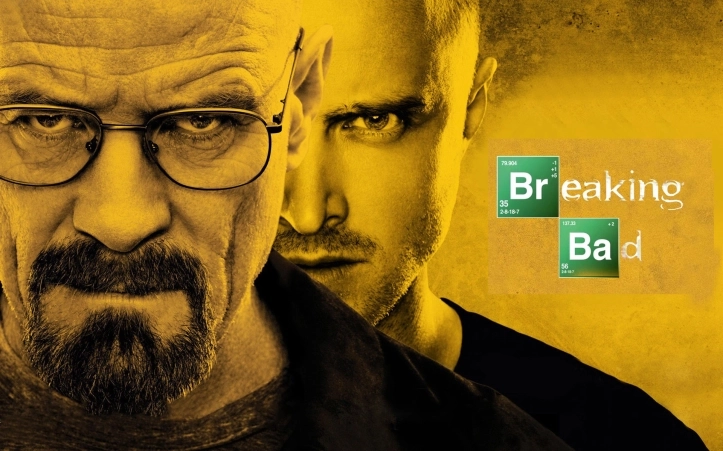
In the 2011 episode “Bullet Points” from the fourth season of Breaking Bad, gambling is used as a plot device to explain the sudden influx of money for the main character, Walter White. In this episode, Walter concocts a story about winning big at blackjack to explain the finances that will pay for Hank’s medical bills. This narrative becomes a pivotal point in the show’s exploration of deceit and the lengths to which characters will go to cover their tracks.
Accuracy Meter: 8/10
Breaking Bad presents a realistic depiction of gambling addiction and its consequences. The show highlights the psychological aspects of gambling, such as the compulsive nature of addiction and the rationalizations that gamblers often use. In “Bullet Points,” the fake story about gambling winnings is crafted with just enough detail to be believable, demonstrating how gamblers have to construct elaborate lies to justify their actions and financial situations. This portrayal matches up with real-world behaviors observed in gambling addiction, where individuals may go to great lengths to hide their losses and continue gambling despite any adverse consequences.
Impact of Breaking Bad
The portrayal of gambling in Breaking Bad contributes to the show’s established themes of risk and desperation. Walter’s fabricated gambling story underscores his increasing entanglement in lies and illegal activities, highlighting his descent into moral ambiguity. The use of gambling as a cover story also reflects the high stakes and desperate measures that define the lives of the show’s characters. This episode, and the way gambling is woven into the narrative, ramps up the tension and underscores the theme of risk-taking that permeates the series. It also offers a broader commentary on how people rationalize dangerous behaviors and the potential fallout from living a double life.
By presenting a realistic view of gambling and its psychological impact, Breaking Bad provides a compelling and accurate representation that resonates with viewers and adds depth to its storytelling. The show not only entertains but also educates about the darker sides of gambling, making it a solid example of how TV can portray gambling in a nuanced and meaningful way.
Peaky Blinders (2013-2022)
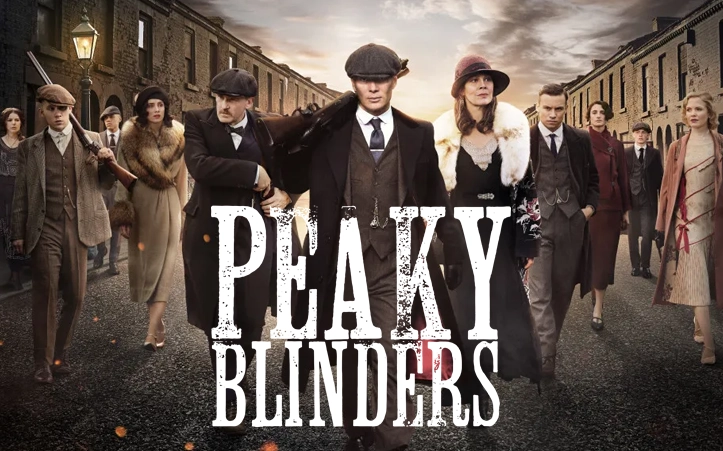
Peaky Blinders is a British period crime drama set in Birmingham, England, just after the First World War. The series centers on the Shelby family, particularly the ambitious and cunning crime boss, Tommy Shelby, played by Cillian Murphy. The family starts out running a small-time operation but quickly expands its influence and criminal activities, including gambling. Gambling is a critical plot element throughout the series, depicting how the Shelbys built their empire and kept their power.
From the first season, gambling is shown as one of the primary activities of the Peaky Blinders gang—the Shelbys use their betting shop as a front for their illegal operations, and they gradually take over the whole betting industry in Birmingham. Key plot points involving gambling include their control over local betting rings, fixing races, and expanding their operations to racecourses across England.
Accuracy Meter: 8/10
The show, although fictional, does a great job of showing how an empire can be built upon gambling. It accurately reflects the gambling culture of the time, including illegal bookmaking, betting on horse races, and running betting shops. The Shelbys’ operations are shown in meticulous detail, from collecting bets to handling winnings and dealing with competitors and law enforcement.
The historical context is well-researched, reflecting the real practices of gangs like the Peaky Blinders, who were known for their involvement in gambling and other criminal enterprises. The show’s depiction of the rise and fall of the Shelbys’ gambling empire lines up with the documented history of similar gangs in early 20th-century Birmingham. It also highlights the dangers and brutality associated with the gambling industry during that period, including violent turf wars and corruption.
Impact of Peaky Blinders
The gambling aspect in Peaky Blinders serves to enhance the show’s narrative of wealth and power—the family’s gambling operations serve multiple purposes. It illustrates their strategic intelligence and ruthlessness, contributing to their image as formidable and influential figures in Birmingham’s underworld.
The gambling plotlines also provide a source of conflict and drama, as the Shelbys face challenges from rival gangs, law enforcement, and within their own ranks. This constant tension drives the story forward and keeps viewers hitting “play next episode.” The show effectively uses gambling as a symbol of the life-or-death stakes involved in the Shelby family’s quest for power, wealth, and legitimacy.
Furthermore, the glamorous yet gritty portrayal of gambling adds to the show’s aesthetic and thematic depth. The lavish settings of racecourses and betting halls contrast with the violent and often morally ambiguous actions of the characters, highlighting the duality of their pursuit of success. Peaky Blinders is a detailed and realistic portrayal of gambling, integral to its storytelling.
Las Vegas (2003-2008)
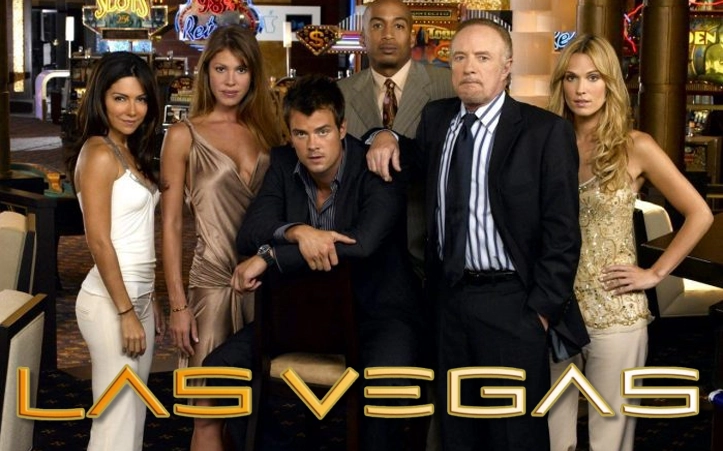
Las Vegas is a comedy-drama series that aired on NBC from 2003 to 2008. The show is set in the fictional Montecito Resort and Casino on the Las Vegas Strip, providing an elegant backdrop for the various storylines. The main characters are Ed Deline (James Caan), the former head of security turned president of operations; Danny McCoy (Josh Duhamel), Ed’s protégé who starts as a security officer and later becomes the head of security and eventually president of operations; Mary Connell (Nikki Cox), the special events director; Mike Cannon (James Lesure), an engineer turned security expert; and Samantha Jane “Sam” Marquez (Vanessa Marcil), a top casino host. These characters navigate the challenges of running a major casino while dealing with personal and professional issues.
Accuracy Meter: 8/10
The series is a pretty accurate portrayal of the inner workings of a major casino resort, focusing on both the operational and security aspects. It delves into the elaborate workings of managing a casino, from handling high rollers and organizing events to dealing with security threats and financial issues.
The character of Ed Deline, with his background in the CIA, brings a unique perspective to casino security, emphasizing the high-tech surveillance and strategic thinking required to keep the casino safe. Danny McCoy’s journey from security officer to president highlights the diverse roles within casino management and the skills needed to handle everything from customer service to crisis management.
The show also accurately depicts the use of surveillance technology in casinos—the security team constantly monitors the casino floor through an extensive network of cameras, a common practice in real-life casinos to prevent cheating and guarantee the safety of guests and staff. This realistic portrayal provides viewers with a neat inside look at the sophisticated measures casinos employ to maintain security and integrity.
Impact of Las Vegas
Las Vegas significantly impacts viewers’ understanding of how major casino resorts operate. By showcasing the day-to-day activities and challenges faced by the Montecito staff, the series educates viewers about the multifaceted nature of casino management. It highlights the balance between providing top-notch entertainment and maintaining stringent security protocols.
The show’s portrayal of the luxurious and fast-paced environment of the Montecito draws viewers into the world of high-stakes gambling and resort management. It provides a detailed look at the roles and responsibilities of casino employees, from the glamorous job of a casino host to the critical and often dangerous work of the security team.
Las Vegas also humanizes the individuals working behind the scenes, showing their personal struggles and triumphs. This approach helps viewers relate to the characters and understand the pressures and demands of working in such a dynamic and high-pressure industry.
Ozark (2017-2022)
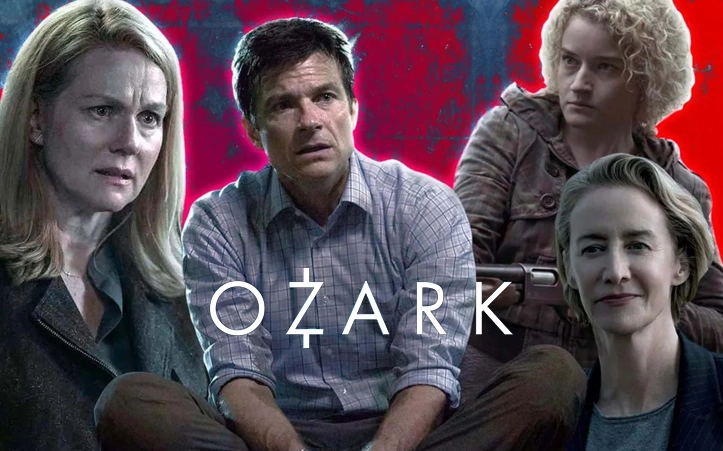
Ozark follows Marty Byrde (Jason Bateman), a financial advisor who relocates his family from Chicago to the Lake of the Ozarks after a money laundering scheme for a Mexican drug cartel goes wrong—like, really wrong. Marty and his wife Wendy (Laura Linney) get in over their heads in new criminal activities as they establish another money laundering operation to appease the cartel. The show depicts their interactions with local criminals, including the Langmore and Snell families and, later, the Kansas City mafia. A notable aspect of their operations includes gambling, which becomes central to the plot in the later seasons.
Gambling becomes a central part of the Byrde family’s operations when they open the Missouri Belle Riverboat Casino in Season 3, which serves as a front for laundering money for the Navarro cartel. The storyline explores the challenges of running a casino, including navigating regulatory hurdles, managing security, and dealing with internal power struggles. The riverboat casino becomes a hub of activity, drawing in different criminal elements and creating new alliances and enemies.
Accuracy Meter: 7/10
The Netflix series presents a realistic portrayal of how gambling operations can be intertwined with organized crime, highlighting the use of casinos as fronts for money laundering, a common practice among criminal organizations. The Byrdes’ casino operations involve detailed strategies for laundering money, including manipulating financial records and handling large cash flows, which are portrayed with a high degree of accuracy.
The series also portrays the intricate planning and constant watchfulness required to avoid detection by law enforcement and rivals. The inclusion of an FBI forensic accountant investigating the casino’s finances adds to the authenticity, showcasing the real-world cat-and-mouse game between criminals and authorities.
Impact of Ozark
The gambling-related storylines in Ozark add substantial narrative depth. The casino serves as a physical manifestation of the Byrdes’ deeper criminal activities and their struggle for power and survival. It also introduces new dimensions to their characters, particularly Marty and Wendy, who become increasingly ruthless and cunning as they fight to control their empire.
The riverboat casino plotline allows the show to explore themes of greed, corruption, and the moral compromises people make under pressure. It also creates opportunities for character development, particularly for Ruth Langmore (Julia Garner), who becomes a pivotal figure in managing the casino. Her evolving role reflects her growth from a small-time criminal to a significant player in the Byrdes’ operations.
The incorporation of gambling in Ozark enriches the storyline, providing a realistic portrayal of its role in organized crime while deepening the complexity of the characters and their relationships.
Common Themes and Tropes in Gambling Media
Gambling has long been an engrossing theme in media, providing tons of great material for storytelling, and common themes and tropes recur in movies, TV shows, and literature, showing the dual-sided nature of gambling and its impact on people and society as a whole. The following are some of the most common themes and tropes found in gambling media:
The Rise and Fall Arc
- Examples: Characters who experience rapid success followed by a dramatic downfall.
- Significance: This theme mirrors the inherent volatility and risks associated with gambling. Characters often start with a stroke of luck, achieving rapid success and enjoying the high life. However, their fortunes eventually take a turn for the worse, leading to dramatic downfalls. This arc is compelling because it captures the precarious nature of gambling, where fortunes can change in an instant. Examples include films like Casino, where Sam “Ace” Rothstein rises to the top of the casino world before plummeting in a dramatic fall, and Rounders, where Mike McDermott’s journey through the highs and lows of poker shows the always unpredictable nature of gambling.
The Undercover Gambler
- Examples: Characters who hide their gambling activities from loved ones.
- Significance: This trope explores themes of secrecy and deception. Characters often lead double lives, presenting a façade of normalcy while secretly engaging in gambling. This can lead to strained relationships and dramatic revelations when their activities are inevitably discovered. This theme is prevalent in shows like Breaking Bad, where Skyler White’s suspicions about Walter’s gambling cover story create tension and suspense, or in movies like The Gambler (2014), where the protagonist hides his addiction from his family, leading to personal and financial ruin.
The Heist
- Examples: Elaborate plans to cheat casinos or win big, as seen in Ocean’s Eleven, Ocean’s Twelve, & Ocean’s Thirteen.
- Significance: The heist trope highlights the allure of beating the system and outsmarting the establishment. These stories typically involve meticulous planning, high stakes, and super-intense suspense, making them fun and engaging. The characters in these narratives are usually driven by a mix of greed, desperation, ingenuity, and revenge. In Ocean’s Eleven, Danny Ocean and his team execute a complex plan to rob multiple Las Vegas casinos. Then they do it again in Ocean’s Twelve and once more in Ocean’s Thirteen.
Gambling as a Metaphor
- Examples: Using gambling to symbolize life’s risks and choices.
- Significance: Gambling often serves as a metaphor for the broader human experience, symbolizing the risks and choices people face in life. This theme adds philosophical depth to stories, reflecting on the unpredictability of life and the consequences of our decisions. In The Cincinnati Kid, the high-stakes poker game symbolizes the protagonist’s struggle for success and validation. Similarly, in Rounders, poker serves as a metaphor for taking risks and following one’s passion despite the potential for failure.
By incorporating these themes and tropes, gambling media not only entertains but also offers insights into human behavior, risk, and the often unpredictable nature of fortune. These narratives hit home with audiences because they reflect real-life experiences and the universal pull of chance and possibility.
Realism vs. Dramatic License
Gambling media walks a fine line between realism and dramatic license, and getting the right balance is a must for creating stories that are both watchable and real. Here’s a look at how this balance is achieved, some common inaccuracies in gambling portrayals, and the reasons behind these artistic choices.
Balancing Accuracy with Entertainment
To pull in audiences, both films and TV shows include exaggerated elements and heightened drama—this is nothing new or groundbreaking, as it makes the gambling scenes more exciting and emotionally charged. The portrayal of high-stakes poker games will include dramatic bluffs and tense showdowns that probably don’t happen as much IRL. These embellishments are designed to keep viewers watching (hopefully on the edge of their seats).
In Casino Royale (2006), the poker scenes are intensified for dramatic effect, with large sums of money changing hands in a single hand and heart-pounding tension during the final showdown between James Bond and Le Chiffre. While real poker games can be stressful, the level of drama is always heightened in films to sustain audience engagement.
Some productions manage to strike a balance between realism and entertainment, providing an accurate depiction of gambling while still being engaging. Rounders is often praised for its realistic portrayal of the underground poker scene. The film captures the subtleties of poker strategy and the psychological aspects of the game while still delivering a compelling narrative. Similarly, Molly’s Game stays true to the real-life story of Molly Bloom, providing an honest look at high-stakes poker games while incorporating enough drama to keep viewers invested.
Common Inaccuracies
Gambling media tends to perpetuate misconceptions about the odds and strategies involved in games.
- For instance, movies frequently depict card counting in blackjack as a surefire way to beat the house, when in reality, it requires immense skill, concentration, and teamwork, and even then, it only provides a slight edge. Films like 21 have contributed to this myth, simplifying the complexities of card counting for dramatic purposes.
- Another common inaccuracy is the portrayal of poker hands. In some films, improbably strong hands face off against each other, creating dramatic climaxes. While these scenarios are great viewing, they are statistically unlikely to happen as often as depicted. This can lead to misunderstandings about the frequency of such high-stakes situations in real-life poker games.
- Casinos are usually shown as super glamorous, high-stakes environments where every game is filled with anxiety and excitement. In reality, casinos are much more mundane, with most players engaging in low-stakes games and routine gambling. Movies like Casino and Ocean’s Eleven only show the glitzy side of casinos, glossing over the less glamorous aspects, like the long hours and the often repetitive nature of casino operations.
- Moreover, the security measures and surveillance operations in casinos are often dramatized. While real casinos do employ extensive security systems, the level of sophistication and the dramatic confrontations shown in films can be exaggerated. For instance, the intricate heists in Ocean’s Eleven are highly entertaining, but so far from realistic, they are almost comical, at least in terms of execution and the capabilities of actual casino security.
The Impact of Accurate Gambling Portrayals
Accurate portrayals of gambling in media have far-reaching effects, both educational and social. They help demystify the gambling world and influence public perceptions and behaviors.
Educating the Audience
Accurate depictions of gambling in the media play a pretty big role in educating the public! By showing realistic scenarios, including the rules of games, the odds, and the potential consequences of gambling, the media can arm viewers with a better understanding of what gambling truly entails.
Accurate portrayals can also highlight the dangers of gambling addiction, showcasing the psychological and financial toll it can take on individuals and their families. This awareness helps players make better and more informed decisions and promotes responsible gambling behaviors. For example, The Gambler presents a stark look at gambling addiction, showing the downward spiral of its protagonist and the devastating impact on his life.
By providing a balanced view of gambling, accurate media portrayals can also help reduce the stigma associated with it. They show that while gambling is a form of entertainment, it also comes with some possibly big risks. This balanced perspective encourages a more nuanced understanding, cutting back on the tendency to view gambling solely as either a glitzy activity or a destructive vice.
And shows that utilize gambling as a subplot demonstrate the dual nature of gambling—as both a potential financial strategy and a source of personal risk. Such portrayals can create more empathy and understanding for those struggling with gambling issues, encouraging a more supportive and less judgmental societal attitude.
Influencing Popularity and Participation
Pop culture has a powerful influence on public interest and participation in gambling. When gambling is portrayed attractively in the media, it can drive interest and participation in certain games or activities. 21 increased public interest in blackjack and card counting, and the popularity of poker saw a resurgence in the early 2000s, partly due to the influence of movies like Rounders and the televised World Series of Poker.
TV shows like Las Vegas and Ozark also spotlight different aspects of the gambling world, from the high-rolling life of high rollers to the darker reality of money laundering through casinos. These portrayals can inspire viewers to explore gambling, either as a pastime or a serious endeavor.
Media plays a crucial role in shaping public perceptions of gambling, with both positive and negative effects.
- On the positive side, accurate portrayals can educate viewers about the risks and responsibilities associated with gambling, promoting safer and more informed participation. They can also highlight the entertainment value of gambling when done responsibly, showcasing it as a legit form of recreation.
- Yet there can be potential negative effects as well—glamorized portrayals of gambling can lead to unrealistic expectations and even encourage risky behaviors. For instance, movies that focus on the excitement of big wins without showing the likelihood of losses can create a skewed perception of gambling. This means people can underestimate the risks and overestimate their chances of winning, potentially creating problematic gambling behaviors.
Conclusion
Gambling has been a part of pop culture for as long as both entities have been around, and with good reason—it’s fascinating to watch it play out!
Here’s a quick refresher on what we covered:
The Fascination with Gambling in Pop Culture
- Historical Context: Gambling has been a staple in films and TV since early cinema, with classics like The Cincinnati Kid and The Sting capturing the high-stakes world of gambling.
- Evolution: Over the decades, portrayals have evolved from romanticized views to more nuanced depictions, as seen in films like Casino and series like Ozark.
Why Gambling Captivates Audiences
- Thrill and Suspense: The inherent unpredictability of gambling keeps viewers engaged, creating memorable and intense moments.
- Relatable Characters: Gambling stories often feature characters facing high stakes, both financially and emotionally, making their struggles and aspirations relatable to viewers.
Iconic Movies That Depict Gambling Accurately
- Casino (1995): Directed by Martin Scorsese, this film accurately portrays the operations of a casino and the influence of organized crime.
- Rounders (1998): Offers an authentic depiction of the underground poker scene and the psychology of poker players.
- 21 (2008): Based on the true story of the MIT Blackjack Team, it highlights card counting and casino security.
- Molly’s Game (2017): Tells the true story of Molly Bloom’s high-stakes poker games, showcasing both the glamorous and risky sides of underground poker.
TV Shows That Get Gambling Right
- Breaking Bad (2008-2013): Uses gambling to explore themes of deceit and moral ambiguity.
- Peaky Blinders (2013-2022): Depicts the Shelby family’s rise through gambling and its impact on their power.
- Las Vegas (2003-2008): Provides a behind-the-scenes look at casino management and security.
- Ozark (2017-2022): Shows how gambling operations are intertwined with organized crime, adding depth to the narrative.
Common Themes and Tropes in Gambling Media
- The Rise and Fall Arc: Characters experience rapid success followed by dramatic downfalls, reflecting the volatility of gambling.
- The Undercover Gambler: Characters hide their gambling activities, exploring themes of secrecy and deception.
- The Heist: Elaborate plans to cheat casinos highlight the allure of beating the system.
- Gambling as a Metaphor: Symbolizes life’s risks and choices, adding philosophical depth to stories.
Realism vs. Dramatic License
- Balancing Accuracy with Entertainment: Some exaggeration is necessary for drama, but successful films maintain realism without sacrificing excitement.
- Common Inaccuracies: Media often misrepresents gambling odds, strategies, and casino environments, creating unrealistic expectations.
The Impact of Accurate Gambling Portrayals
- Educating the Audience: Accurate depictions raise awareness about the realities and risks of gambling.
- Reducing Stigma: Balanced portrayals promote a better understanding of gambling and its risks.
- Influencing Popularity and Participation: Media can drive interest in gambling activities and shape public perceptions, highlighting the importance of responsible representation.
Final Thoughts
Why are accurate portrayals of gambling in the media important? For one thing, it won’t give players the wrong idea about rolling up to a casino and winning a fortune. Secondly, by showing the potential downsides of the pastime, it encourages and promotes responsible gambling, which is one of the most important things!
Do you think we got it right with our picks for the most realistic movie and TV show portrayals of casinos and gambling? Is there another movie or series that you feel does it better? We’d love to hear your thoughts!

Alyssa contributes sportsbook/online casino reviews, but she also stays on top of any industry news, precisely that of the sports betting market. She’s been an avid sports bettor for many years and has experienced success in growing her bankroll by striking when the iron was hot. In particular, she loves betting on football and basketball at the professional and college levels.



